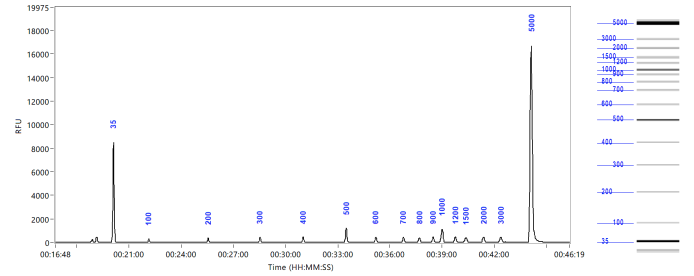Device: Fragment Analyzer 5300, 96 capilar array (33 cm)
Kits: Agilent DNF-915 Reagent Kit (35 – 5000 bp), Agilent DNF-905 dsDNA Kit (1-500 bp)
Hi,
I have the issue that peak intensities of the lower and upper marker are super high whenever I use DNA kits (so far I tested the two DNA kits mentioned above). Due to the high intensities, samples and ladders are almost non-existent (images of ladder attached below). I don't have the issue when running RNA kits, though. Here the peaks are normal and they are looking exactly as described in the manual.
What could be possible reasons for this?
I prepared the Marker Plate as described in the manual: "When preparing lower/upper DNA marker plates for repeated use, a volume of 30 µL/well with a 20 µL mineral oil overlay is recommended."
Many thanks,
Robert
100 bp ladder on DNF-915

100 bp ladder on DNF-905
35-400 ladder on DNF-905
RNA ladder on DNF-471
